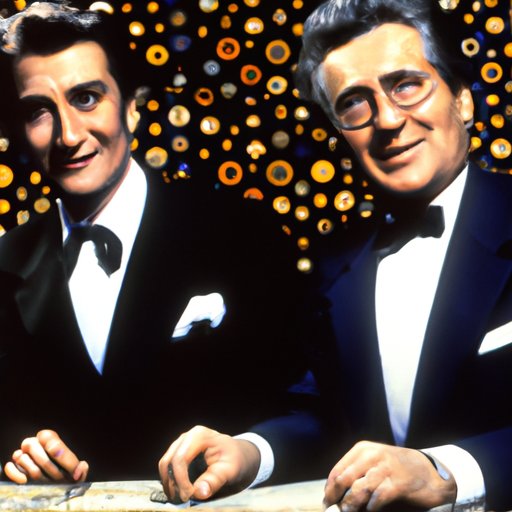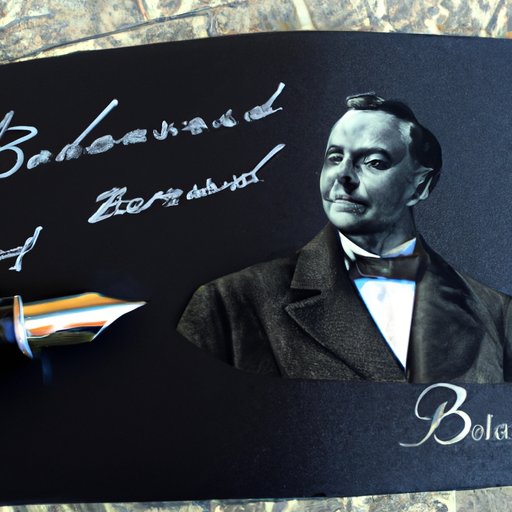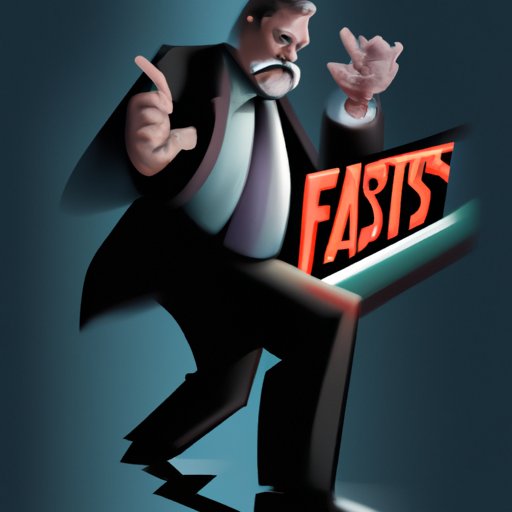Introduction
If you’re a fan of classic mob movies, chances are you’ve seen Martin Scorsese’s “Casino”. This 1995 crime drama features an all-star cast, including Robert De Niro, Sharon Stone, and Joe Pesci, and tells the story of the mafia’s involvement in Las Vegas casinos during the 1970s and 80s. But while “Casino” remains a fan favorite more than two decades after its release, many moviegoers may wonder: Who was the movie “Casino” based on?
Unlike some films based on true stories, “Casino” has a complex and multifaceted origin story, with a number of different real-life figures and events that influenced the final product. In this article, we’ll take a closer look at some of the key players behind “Casino”, explore the historical context that inspired the movie, and separate fact from fiction in this classic mob thriller.

The Real Story Behind “Casino”: Uncovering the True Inspiration for the Movie
At its core, “Casino” is based on the true story of Frank “Lefty” Rosenthal, a professional gambler and bookmaker who was a key figure in Las Vegas during the 1970s. In the movie, De Niro’s character, Sam “Ace” Rothstein, is based on Rosenthal, while Stone’s character, Ginger McKenna, is loosely based on Rosenthal’s wife, Geri McGee. Pesci’s character, Nicky Santoro, is also based on a real-life figure: Anthony Spilotro, a Chicago mobster who was sent to Las Vegas to oversee the mob’s interests in the city.
While “Casino” takes some liberties with the true story, many of the events and characters in the movie are based on real-life people and occurrences. For example, in the movie, the mob attempts to skim money from the Tangiers casino, mirroring a real-life scheme that Rosenthal and his associates were involved in during the 1970s. Additionally, the character of Kansas City boss Artie Piscano, played by character actor Vinny Vella, is based on real-life gangster Carl “Tuffy” DeLuna.
From Mobsters to Hollywood: Tracing the Roots of Scorsese’s “Casino”
The origins of “Casino” date back to the early 1980s, when screenwriter Nicholas Pileggi began researching the life of Frank Rosenthal for a potential book. Pileggi had previously written “Wiseguy”, a non-fiction book about the life of mafia informant Henry Hill that had been adapted into the hit movie “Goodfellas” by Scorsese. Pileggi saw the potential for another gritty, character-driven crime drama in Rosenthal’s story, and pitched the idea to Scorsese.
Scorsese, a longtime fan of gangster movies and a master of cinematic storytelling, was immediately drawn to the project. In “Casino”, he saw the opportunity to explore not just the inner workings of organized crime, but also the broader cultural context of Las Vegas during the 1970s and 80s. Like many of Scorsese’s other movies, “Casino” would be as much a commentary on American culture as it was a thrilling crime saga.

The Infamous Characters That Inspired “Casino”: A Historical Account
One of the key appeals of “Casino” for many viewers is its memorable characters. From De Niro’s suave and calculating Sam Rothstein to Stone’s fiery and self-destructive Ginger, the movie is filled with complex and memorable figures that keep audiences on the edge of their seats. But who were the real-life counterparts to these iconic characters?
Lefty Rosenthal, the inspiration for Sam Rothstein, was a complex figure who worked as a bookmaker and odds maker in Las Vegas during the 1970s. Known for his meticulous attention to detail and expert knowledge of gambling, Rosenthal was also heavily involved in organized crime, acting as a frontman for the Chicago mob’s operations in Las Vegas. Similarly, Geri McGee, on whom Ginger McKenna was based, was a former showgirl and model who became involved with Rosenthal in the early 1970s and struggled with addiction and infidelity throughout their tumultuous relationship.
Perhaps one of the most intriguing characters in “Casino” is Nicky Santoro, played with ferocious intensity by Joe Pesci. In the movie, Santoro is a ruthless enforcer who will stop at nothing to protect his mob bosses’ interests. But in real life, Anthony Spilotro was even more violent and unhinged than his on-screen counterpart. Known as a “street fighter in a suit”, Spilotro was implicated in numerous murders and other violent crimes before his death in 1986.
The Notorious Origins of “Casino”: Exploring the Real-life Figures of the Movie
While much of “Casino” is focused on the inner workings of the Las Vegas casino industry and the mob’s involvement in it, the movie also delves into the personal lives and relationships of its characters. From the passionate but doomed romance between Sam and Ginger to the deep-seated loyalties that bind Nicky and his associates, the movie uses its characters’ personal lives to explore larger themes of violence, power, and corruption.
One of the most interesting aspects of “Casino” is its portrayal of the complex web of relationships that existed between the mob, the casinos, and the government during the 1970s and 80s. Through characters like Sam, Nicky, and their associates, the movie shows how the lines between legitimate business and organized crime were often blurred in Las Vegas during this period.
The Connection Between “Casino” and Mob Culture: Behind the Film’s Characters
While “Casino” is a standout movie in its own right, it also owes a debt to the broader cultural context of organized crime in the United States. From “The Godfather” to “Goodfellas”, gangster movies have long been a staple of Hollywood, and “Casino” is no exception. In fact, many of the themes and motifs that are present in “Casino” are consistent with Scorsese’s other mob-related movies.
At the same time, “Casino” is also unique in its portrayal of Las Vegas during the 1970s and 80s. Through its vivid depictions of casinos, hotel rooms, and back alleyways, the movie captures the essence of a bygone era in the Las Vegas casino industry. In doing so, it offers a fascinating glimpse into the history of a city that has long held a special place in American culture.
Drawing the Line Between Fact and Fiction: Investigating the Real Story Behind “Casino”
While “Casino” is a largely fictionalized account of the events that inspired it, the movie also contains many elements that are based on fact. For example, the opening sequence, in which De Niro’s character is blown up by a car bomb, is based on a real-life attempted assassination of Rosenthal in 1982. Similarly, the movie’s portrayal of the mob’s attempts to skim money from the Tangiers casino reflects a real-life scheme that Rosenthal and his associates were involved in.
However, like many movies based on true stories, “Casino” also takes a number of creative liberties with the facts. For example, Ginger McKenna was not actually murdered in the manner depicted in the movie – she died of a drug overdose in 1982. Similarly, the character of Lester Diamond, played by James Woods, is largely fictional, with no real-life counterpart.
Conclusion
For many moviegoers, “Casino” is a classic crime drama that offers a thrilling glimpse into the seedy underbelly of Las Vegas during the 1970s and 80s. But beyond its surface-level appeal, the movie is also a complex and nuanced examination of the relationships between power, violence, and corruption in American society. By uncovering the true story behind “Casino”, we can gain a deeper appreciation of the many layers and influences that have shaped this iconic movie.
So whether you’re a longtime fan of the movie or are just curious about the real story behind it, we encourage you to share this article with others who may be interested in the fascinating and complex history of “Casino”.
